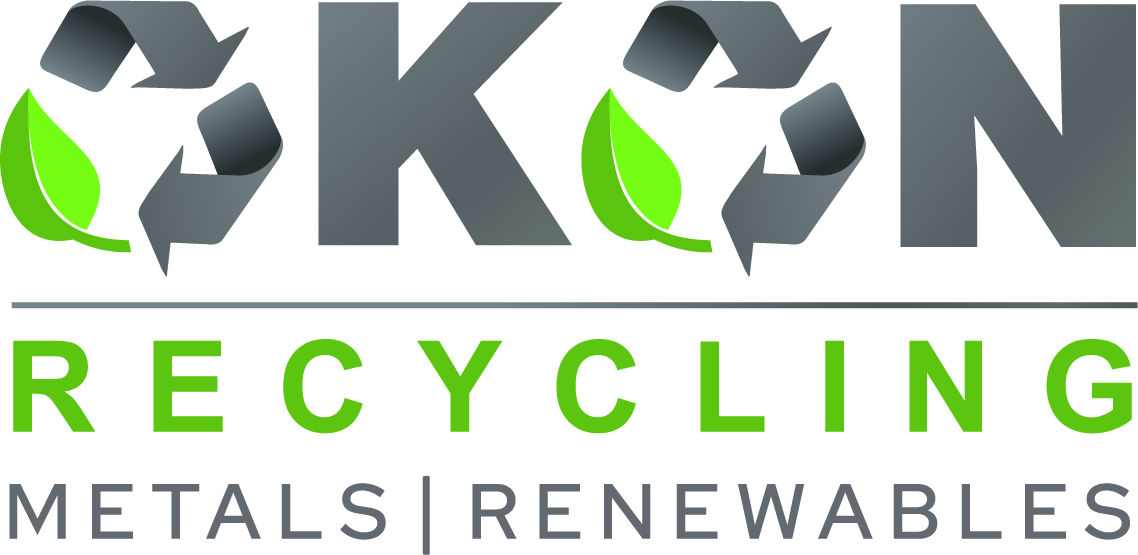5901 Botham Jean Blvd, Dallas, TX 75215
Metal Recycler: Transforming Scrap into Sustainable Solutions
April 10, 2025Did you know that over 100 million tons of steel are recycled annually in the United States alone? This figure highlights the crucial role metal recyclers play in our economy.
As urban areas develop and industries progress, the demand for efficient metal recycling grows. These key contributors to sustainability transform discarded scrap into valuable resources, driving a circular economy that reshapes our world.
Metal recyclers lead a green transformation, turning waste into essential raw materials. Their work extends beyond collecting and processing scrap; it’s a sophisticated operation that conserves natural resources, reduces energy consumption, and minimizes our environmental impact.
As businesses and individuals increasingly focus on sustainability, recognizing the importance of metal recyclers is not just an environmental concern—it’s an economic necessity.
The Environmental Impact of Metal Recycling

Metal recycling offers a sustainable alternative to the resource-intensive process of mining and refining virgin metals. This eco-friendly practice yields significant benefits for our planet, from reducing greenhouse gas emissions to conserving precious energy resources.
Reducing Greenhouse Gas Emissions
Metal recycling dramatically reduces greenhouse gas emissions. The process requires far less energy compared to mining and refining new metals, resulting in a significant decrease in carbon dioxide release.
For instance, recycling steel cuts CO2 emissions by 58% compared to primary production. In 2018, recycling 94 million tonnes of steel scrap in the EU saved 157 million tonnes of CO2—equivalent to the emissions from all cars in France, Great Britain, and Belgium combined!
Aluminum recycling is even more impressive, reducing CO2 emissions by 92% when using aluminum scrap instead of raw materials. This reduction in greenhouse gases plays a crucial role in mitigating climate change effects.
Conserving Energy and Resources
The energy savings achieved through metal recycling are remarkable. Breaking it down by metal type:
- Steel: Recycling saves 72% of the energy needed for primary production, equivalent to 4,697 kWh per tonne.
- Aluminum: Recycling uses just 5% of the energy required for primary production.
- Copper: Recycling saves 85% of the energy needed for primary production.
These energy savings translate into reduced fossil fuel consumption and lower electricity demand, further decreasing our carbon footprint. Moreover, recycling one tonne of steel saves 1.4 tonnes of iron ore, 0.8 tonnes of coal, and 0.3 tonnes of limestone—a significant conservation of natural resources.
Preserving Natural Habitats
By reducing the need for raw material extraction, metal recycling plays a vital role in habitat preservation. Mining operations often lead to deforestation, soil erosion, and water pollution. In contrast, recycling helps keep these ecosystems intact, protecting biodiversity and maintaining ecological balance.
Furthermore, diverting metals from landfills not only saves valuable space but also prevents potential soil and water contamination from metal leaching. This proactive approach to waste management contributes to healthier environments for both wildlife and human communities.
Types of Metals Processed by Recyclers
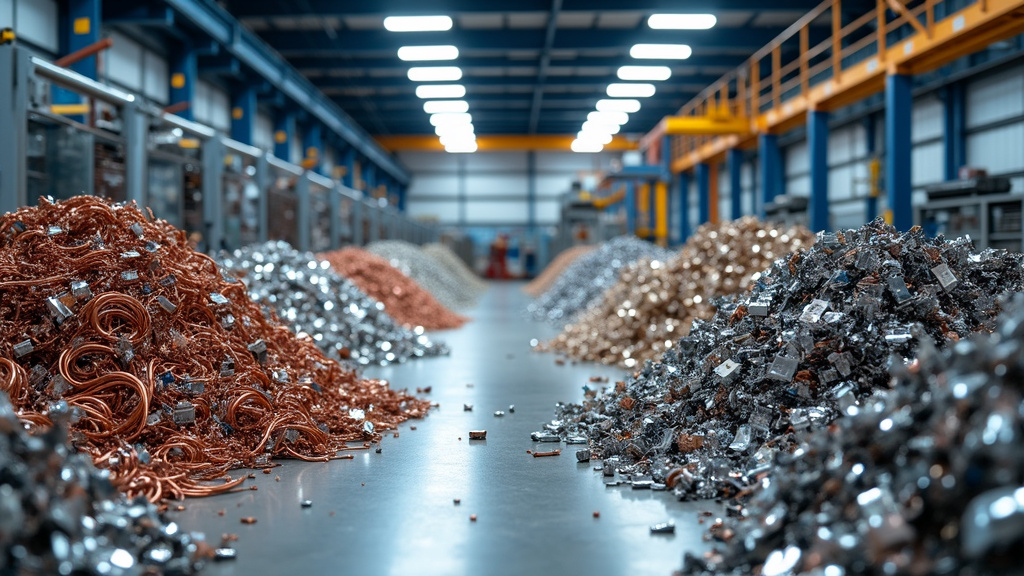
Let’s explore the main categories of metals that recyclers process and some common items you might find in your home or workplace.
Ferrous Metals: The Magnetic Workhorses
Ferrous metals, containing iron, are crucial to many industries due to their strength and versatility. These metals are magnetic, making them relatively easy to separate during recycling. Common ferrous metals processed by recyclers include iron and steel.
Recyclers use specialized techniques to handle ferrous metals effectively. After collection, these materials often undergo magnetic separation to isolate them from other waste. Shredding machines then break down larger pieces into more manageable sizes, facilitating easier melting and purification.
Look around your home or workplace, and you’ll likely spot many items containing ferrous metals suitable for recycling:
- Old appliances like refrigerators, ovens, and washing machines
- Steel food cans and containers
- Cast iron cookware and radiators
- Steel building materials (beams, pipes, etc.)
- Automobile bodies and parts
Non-Ferrous Metals: Valuable and Versatile
Non-ferrous metals lack iron content and are valued for their unique properties like corrosion resistance, electrical conductivity, and lightweight nature. These metals often have higher recycling values due to their scarcity and wide range of applications. Recyclers use advanced sorting technologies to separate different non-ferrous metals efficiently.
Some of the most commonly recycled non-ferrous metals include:
- Aluminum: Beverage cans, window frames, foil
- Copper: Electrical wiring, plumbing pipes, roofing materials
- Brass: Doorknobs, musical instruments, plumbing fixtures
- Bronze: Statues, medals, marine hardware
- Lead: Car batteries, radiation shielding
- Zinc: Batteries, die-cast parts, galvanized steel coatings
The recycling process for non-ferrous metals often involves techniques like eddy current separation, which uses magnetic fields to sort different metals based on their conductivity. This allows recyclers to achieve high levels of purity in the recovered materials.
Precious Metals: Small Quantities, High Value
While not as abundant as ferrous or common non-ferrous metals, precious metals are a significant focus for many recyclers due to their high value and critical applications in electronics and other industries. These metals require specialized processing to recover efficiently:
- Gold: Found in circuit boards, cell phones, and jewelry
- Silver: Present in electronics, photographic film, and medical equipment
- Platinum: Used in catalytic converters and industrial catalysts
- Palladium: Found in electronics and automotive sensors
Recyclers use complex chemical and electrolytic processes to extract these valuable metals from electronic waste and other sources. Recovering precious metals not only conserves rare resources but also reduces the environmental impact of mining activities.
Summary and Comparison of Metal Types
To better understand the recycling potential of different metals processed by recyclers, consider the following categories and common items:
| Metal Type | Common Recyclable Items | Processing Techniques |
|---|---|---|
| Ferrous Metals | Steel food cans, automobile bodies, appliances | Magnetic separation, shredding, melting |
| Non-Ferrous Metals | Aluminum cans, copper wiring, brass fixtures | Eddy current separation, melting |
| Precious Metals | Gold from electronics, silver from medical equipment | Chemical and electrolytic processes |
The Metal Recycling Process Explained
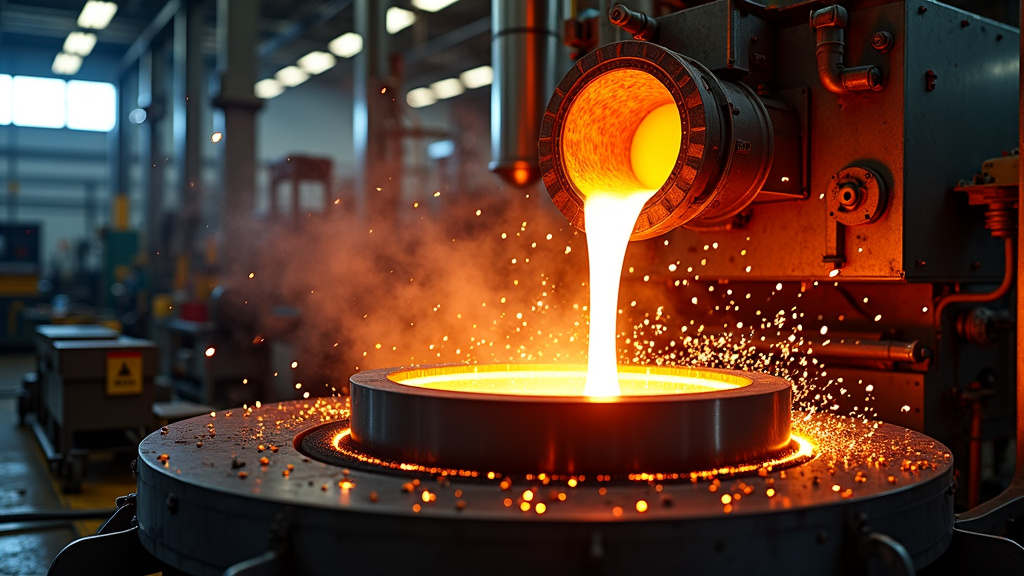
Explore the journey of scrap metal as it undergoes various stages of recycling.
Collection: The First Step in Metal Recycling
The metal recycling process begins with collection, a critical phase where scrap metal is gathered from various sources, including households, construction sites, and industrial facilities.
Specialized containers are often used to keep the metals in good condition during transportation. Some recycling centers offer pick-up services to encourage more participation in metal recycling efforts.
Once collected, the scrap metal is transported to recycling facilities where the next steps of the process occur. This initial stage lays the foundation for an efficient recycling operation.
Sorting: Separating Metals for Optimal Recycling
Upon arrival at the recycling facility, the collected metal undergoes a thorough sorting process. This crucial step ensures that different types of metals are properly separated for recycling.
Advanced technologies play a significant role in this stage. For instance, magnetic separators are used to distinguish ferrous metals (like iron and steel) from non-ferrous metals (such as aluminum, copper, and brass).
Another innovative technology used in this phase is the eddy current separator. This device employs powerful magnetic fields to separate non-ferrous metals from other materials, enhancing the efficiency of the sorting process.
Shredding: Breaking Down Metals for Further Processing
After sorting, the metals move on to the shredding stage. Here, large pieces of metal are broken down into smaller, more manageable components.
Powerful machines called shredders tear apart everything from cars to appliances, reducing even the largest metal objects into small pieces in seconds.
The shredding process not only makes the metals easier to handle but also prepares them for the subsequent melting stage by increasing the surface area for more efficient melting.
Melting: Transforming Solid Scrap into Liquid Metal
Once shredded, the metal pieces are ready for melting in large furnaces that reach extremely high temperatures.
Different types of metals require different melting temperatures. For example, aluminum melts at around 1,220°F (660°C), while steel needs about 2,500°F (1,370°C) to melt completely.
The melting process is carefully controlled to ensure energy efficiency and maintain the quality of the molten metal. It is during this stage that the recycled metal begins to take on a new form.
Purification: Ensuring High-Quality Recycled Metal
After melting, the liquid metal undergoes purification to remove any remaining impurities. This step is crucial for producing high-quality recycled metal that meets industry standards.
Various methods are used for purification, including electrolysis and powerful magnets to remove non-metallic materials. Advanced optical sorting systems may also be employed to detect and remove contaminants.
The purification process ensures that the recycled metal will have properties similar to, or sometimes even better than, metals produced from raw ore, making recycled metals highly desirable for manufacturing new products.
Solidification: The Final Step in Metal Recycling
The last stage in the metal recycling process is solidification, where the purified liquid metal is cooled and formed into specific shapes for easy handling and transportation.
Common forms include ingots, billets, or sheets, depending on the intended use of the recycled metal. These solidified forms are then ready to be shipped to manufacturers for use in creating new products.
This final step completes the transformation of scrap metal into a valuable resource, ready to begin its new life cycle in the form of new metal products.
Economic Benefits of Metal Recycling
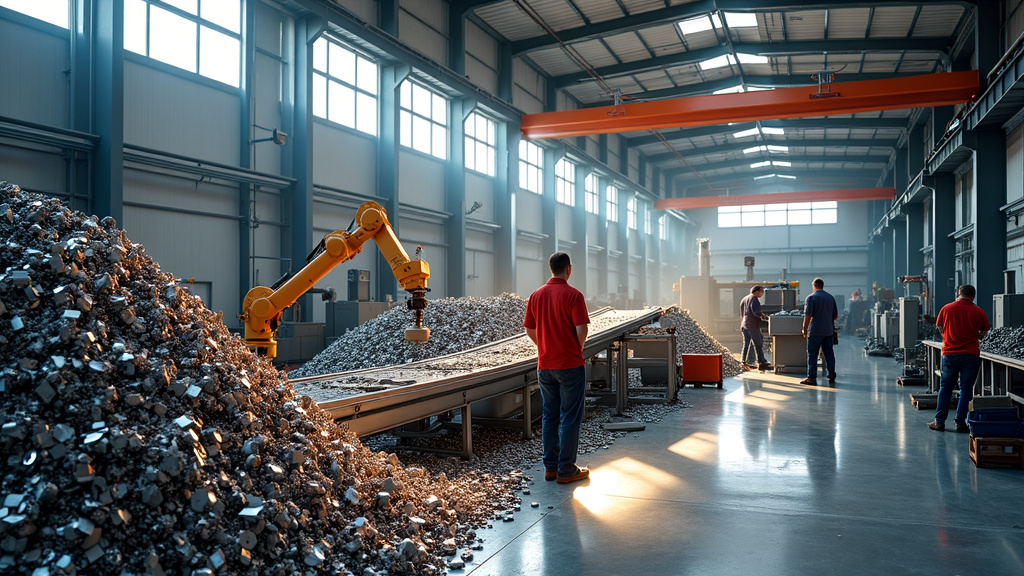
Metal recycling is a significant driver of economic growth, not just an environmental initiative. This industry supports sustainable development by creating jobs, reducing costs for manufacturers, and conserving resources. Here’s how metal recycling is transforming our economy.
Boosting Employment
The metal recycling sector is a notable job creator. According to the Institute of Scrap Recycling Industries (ISRI), the U.S. scrap recycling industry supported approximately 534,000 jobs in 2019 alone. This impressive figure significantly impacts local economies.
These jobs cover a wide range of skills and expertise, from operating machinery at collection sites to engineering innovative recycling technologies. It’s about creating careers, not just sorting scrap.
The ripple effect extends beyond recycling facilities. Each direct job in recycling creates multiple indirect jobs in supporting industries like transportation, equipment manufacturing, and environmental consulting.
Reducing Production Costs
Manufacturers benefit greatly from recycled metals, which often require less energy than processing raw ore. For example, recycling aluminum uses only 5% of the energy needed to produce it from bauxite ore.
This energy efficiency leads to cost savings, enabling manufacturers to offer competitive pricing to consumers. It’s a win-win in today’s cost-conscious market.
As recycling technologies improve, the quality of recycled metals continues to rise. Many industries now use recycled metals for critical components, dispelling myths about their inferiority.
Conserving Resources
Metal recycling conserves resources by giving metals multiple lives, reducing the need for new ore extraction. This conservation has significant economic implications.
Recycling reduces the need for mining, preserving landscapes for other economic activities like tourism or sustainable agriculture. It also extends the lifespan of metal reserves, providing a buffer against resource scarcity and price volatility.
The recycling process often recovers other valuable materials, like precious metals from electronics, adding economic value.
The Broader Economic Impact
Metal recycling’s economic impact goes beyond jobs and cost savings. According to the 2020 Recycling Economic Information (REI) Report by the EPA, recycling and reuse activities in the U.S. generated $37.8 billion in wages and $5.5 billion in tax revenues in 2012, contributing significantly to the national economy.
The metal recycling industry strengthens the U.S. trade balance by reducing reliance on imported raw materials and increasing exports of high-quality scrap, enhancing the country’s global economic position.
As we embrace the circular economy, the economic benefits of metal recycling are likely to grow. What’s good for the environment is also beneficial for the economy, making a strong case for continued investment in this vital industry.
Choosing the Right Metal Recycler for Your Needs
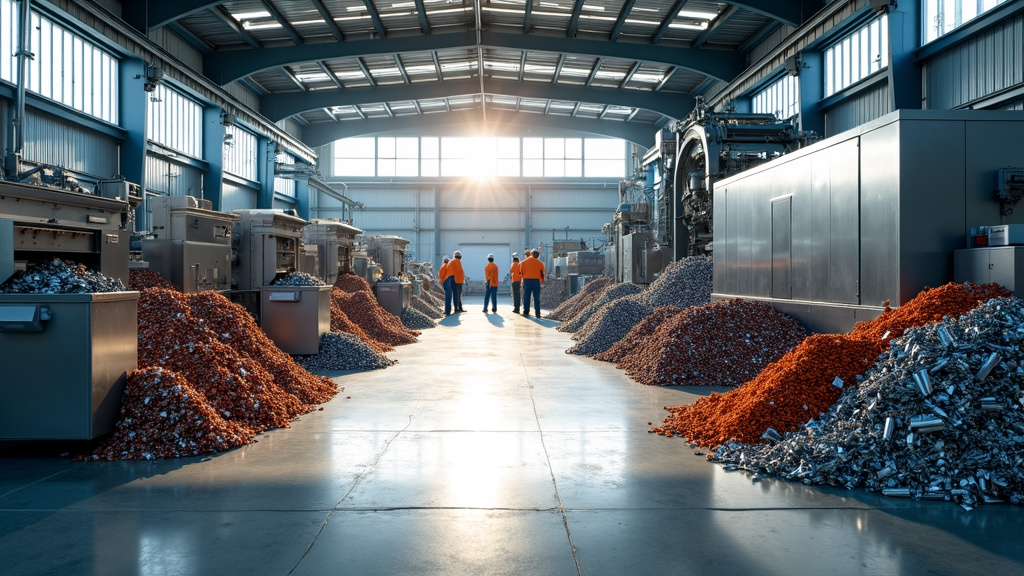
Selecting a metal recycler can significantly impact your financial outcomes and environmental impact. Here are key factors to consider to ensure you partner with a recycler that aligns with your needs and values.
Certifications and Compliance: A Mark of Quality
Look for recyclers with proper certifications. These indicate a company’s commitment to quality and standards. ISO certifications like ISO 9001, ISO 14001, and ISO 45001 are particularly important in the recycling industry.
Inquire about specific industry certifications like R2v3 or e-Stewards for electronic waste handling, ensuring the recycler adheres to strict environmental and data security standards.
Environmental compliance is essential. A reputable recycler should demonstrate their commitment to sustainability through proper waste management practices and pollution control measures.
Processing Capabilities: Can They Handle Your Needs?
Every business has unique recycling requirements. Whether dealing with large volumes of industrial scrap or specialized materials, ensure your recycler has the right equipment and expertise.
Ask about their sorting technologies. Advanced sorting can lead to better recovery rates and potentially better returns. Consider requesting a tour of their facility to see their operations firsthand.
Evaluate their capacity. Can they handle fluctuations in your recycling volume? A recycler that can scale with your needs is invaluable for long-term partnerships.
Transparent and Fair Pricing: Know What You’re Getting
Transparency in pricing is crucial. Look for a partner that uses clear, understandable formulas for determining the value of your scrap metal.
A reputable recycler should explain their pricing model and how it’s tied to market benchmarks. Formula pricing based on industry-standard benchmarks can provide consistent and fair valuations.
Be cautious of recyclers reluctant to discuss their pricing structure or offering deals that seem too good to be true. The highest price isn’t always the best deal if it comes with hidden costs or subpar service.
Additional Considerations for Informed Decision-Making
While certifications, capabilities, and pricing are crucial, don’t overlook other important factors. Consider the recycler’s reputation in the industry and their track record with other clients.
Evaluate their customer service. Are they responsive to your inquiries? Do they offer regular reporting on your recycling efforts? Good communication can significantly impact your recycling program’s success.
Lastly, consider their location and logistics capabilities. A recycler with convenient pick-up services or multiple drop-off locations can simplify your recycling process significantly.
Your Recycler Evaluation Checklist
To help you make an informed decision, here’s a quick checklist of questions to ask potential metal recyclers:
- What certifications do you hold, and can you provide proof of current compliance?
- How do you ensure environmental compliance in your operations?
- What types and volumes of metals can you process?
- Can you explain your pricing structure and how it’s tied to market rates?
- What sorting and processing technologies do you use?
- How do you handle fluctuations in recycling volumes?
- Can you provide references from similar businesses?
- What reporting and documentation do you offer?
- How do you handle logistics and transportation of materials?
By thoroughly vetting potential recyclers with these questions, you’ll be well on your way to choosing a partner that not only meets your current needs but can grow with your business in the future.
Embracing a Sustainable Future Through Metal Recycling
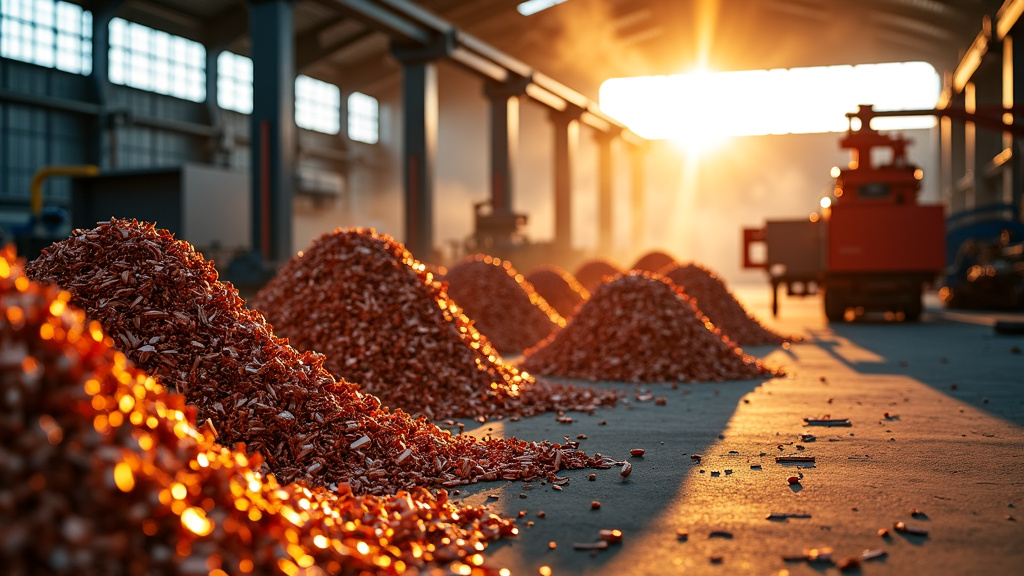
Looking to the future, the importance of metal recycling will only increase. Climate change and resource scarcity are pressing challenges that require innovative solutions. Metal recycling offers a practical, effective response to these global issues. By partnering with experienced recyclers, we can ensure that metal recycling continues to evolve, meeting future challenges while providing economic and environmental benefits today.
Choosing to recycle metals is not just an environmental decision; it’s an economic one. The metal recycling industry creates jobs, stimulates local economies, and reduces production costs across various sectors. According to the British Metal Recycling Association, the metal recycling industry in the UK alone employs around 8,000 people and has an annual turnover of approximately £7 billion.
Embracing metal recycling is a powerful step towards a more sustainable future. It is a choice that extends beyond our immediate surroundings, contributing to global resource conservation and environmental protection. We encourage you to evaluate your metal waste and consider the impact of your recycling decisions.
By partnering with experienced recyclers like Okon Recycling at 214-717-4083, you can play a vital role in shaping a cleaner, greener, and more sustainable world for future generations.
